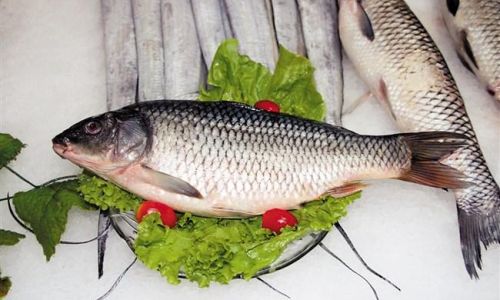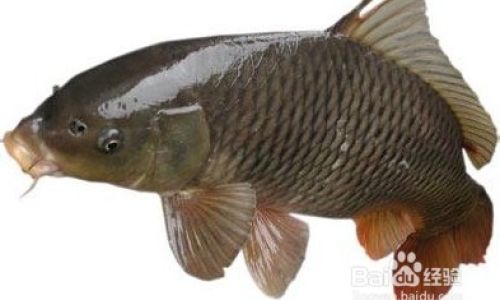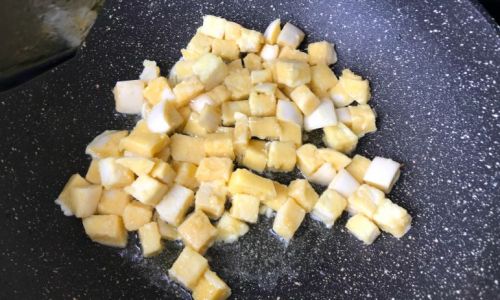Introduction
Carp, a freshwater fish widely consumed across various cultures, is renowned for its delicate flavor and nutritional benefits. However, one of the most significant challenges faced by chefs and home cooks alike is the removal of its inherent fishy odor. This aroma, often described as pungent or musty, can detract from the overall dining experience if not properly addressed. In this comprehensive guide, we will explore various techniques and methods to effectively eliminate the fishy odor from carp, ensuring that your dishes are both flavorful and aromatic.

Understanding the Source of Fishy Odor
Before diving into the removal techniques, it’s crucial to understand the source of the fishy odor. The primary compounds responsible for this aroma are trimethylamine (TMA) and dimethylamine (DMA), which are produced through the bacterial decomposition of trimethylamine oxide (TMAO) found naturally in fish tissue. This decomposition occurs rapidly post-harvest, especially if the fish is not handled or stored properly.
Other contributing factors include the presence of blood, internal organs, and the fish’s mucus layer, which can harbor bacteria and enzymes that exacerbate the fishy smell. Therefore, effective odor removal involves addressing these sources at multiple stages: pre-cooking preparation, cooking methods, and post-cooking treatments.
Pre-Cooking Preparation Techniques
-
Proper Cleaning
The first line of defense against fishy odor is thorough cleaning. Begin by scaling the carp using a fish scaler or a dull knife, ensuring you remove all scales, especially those embedded in the fins and tail. Next, gut the fish by slicing it from the vent to the gills and removing the internal organs, including the gills, which are particularly odorous. Rinse the cavity thoroughly under cold running water.
-
Blood Removal
Blood is a significant contributor to fishy odor. To remove as much blood as possible, cut the fish along its backbone and rinse the flesh thoroughly under cold water. You can also soak the fish in cold salted water for about 15 minutes, which helps draw out blood and impurities.
-
Skinning
While the skin of carp can be cooked and eaten, it often retains a stronger fishy aroma. Removing the skin before cooking can significantly reduce this odor. Use a sharp knife to make a shallow cut just below the scales and peel the skin off gently.
-
Mucus Removal
The slimy mucus layer on the fish’s surface can also harbor bacteria and enhance the fishy smell. Rubbing the fish with coarse salt or a mixture of baking soda and water helps remove this layer effectively. Rinse the fish thoroughly afterward.
-
Marinating
Marinating the fish in acidic solutions such as lemon juice, vinegar, or rice wine vinegar can neutralize the fishy compounds. The acidity helps break down the enzymes and bacteria responsible for the odor. Marinate for at least 30 minutes before cooking.
-
Milk Soak
Soaking the fish in milk for about 30 minutes can also help absorb and neutralize the fishy odor. The casein proteins in milk act as a natural odor absorber.
Cooking Methods to Reduce Fishy Odor
-
Steaming
Steaming is a gentle cooking method that preserves the fish’s natural flavors while minimizing the fishy aroma. Place the cleaned and seasoned carp on a steaming rack over boiling water. Cover the pot tightly to trap steam and cook for about 10-15 minutes, depending on the size of the fish.
-
Poaching
Poaching involves simmering the fish in lightly salted water or a flavorful broth. This method allows for even cooking and helps to infuse the fish with the flavors of the broth, masking the fishy odor. Add herbs like dill, parsley, or lemon slices to the poaching liquid for added aroma.
-
Grilling

Grilling carp over an open flame caramelizes the exterior, creating a smoky, charred flavor that can overpower the fishy aroma. Season the fish generously with salt, pepper, and your favorite herbs before grilling. Use a high heat to sear the fish quickly and lock in juices.
-
Frying
Deep-frying or pan-frying the fish at a high temperature creates a crispy exterior that helps encapsulate the fishy odors within. Make sure the oil is hot enough to ensure the fish cooks quickly and evenly. A breading or coating can also provide an additional barrier against the fishy smell.
-
Baking
Baking carp with a flavorful topping, such as tomatoes, onions, or herbs, can help mask the fishy odor. Wrap the fish in parchment paper or aluminum foil with the toppings and bake at a moderate temperature until cooked through.
Post-Cooking Treatments
-
Sauces and Garnishes
Serving the cooked carp with a rich, flavorful sauce can further mask any residual fishy odor. Creamy sauces, tomato-based gravies, or soy-ginger sauces are all excellent choices. Garnish with fresh herbs, lemon wedges, or sliced chilies to enhance the dish’s aroma.
-
Finishing with Acid
A squeeze of fresh lemon juice, a splash of vinegar, or a drizzle of lime zest over the cooked fish can brighten its flavor and counteract any lingering fishy notes.
-
Chilling
For dishes that involve serving carp cold, such as ceviche or sushi, chilling the fish promptly after cooking can help retain its freshness and minimize the development of fishy odors. Use ice packs or store in the refrigerator until ready to serve.
-
Smoking
Smoking the fish adds a layer of flavor that can effectively cover up the fishy aroma. Use a food smoker or a makeshift setup with wood chips and a covered grill. The smoke from hardwood chips like oak, apple, or cherry infuses the fish with a pleasant, aromatic flavor.
Storage and Handling Tips
Proper storage and handling are crucial in preventing the development of fishy odors. Always purchase fresh carp from a reliable source and store it on ice or in the refrigerator until ready to use. If you’re not planning to cook the fish immediately, wrap it tightly in plastic wrap or aluminum foil and store it in the coldest part of your refrigerator.
When handling raw fish, use separate utensils and surfaces to avoid cross-contamination. Wash your hands, utensils, and surfaces thoroughly after handling fish to prevent the spread of bacteria.
Conclusion
Removing the fishy odor from carp requires a combination of thorough cleaning, strategic cooking methods, and flavorful post-cooking treatments. By following the techniques outlined in this guide, you can transform carp into a delicious, aromatic dish that will delight your taste buds and impress your guests. Remember, the key to success lies in meticulous preparation, the right choice of cooking method, and creative use of flavors to mask and enhance the fish’s natural taste. With practice and patience, you’ll soon master the art of preparing fish that is free from any trace of fishy odor, leaving you with a plate of perfectly cooked, flavorful carp.
This comprehensive guide covers various aspects of eliminating the fishy odor from carp, from pre-cooking preparation techniques to cooking methods and post-cooking treatments. By adhering to these practices, you can ensure that your carp dishes are not only free from unwanted odors but also bursting with flavor and aroma. Happy cooking!





0 comments